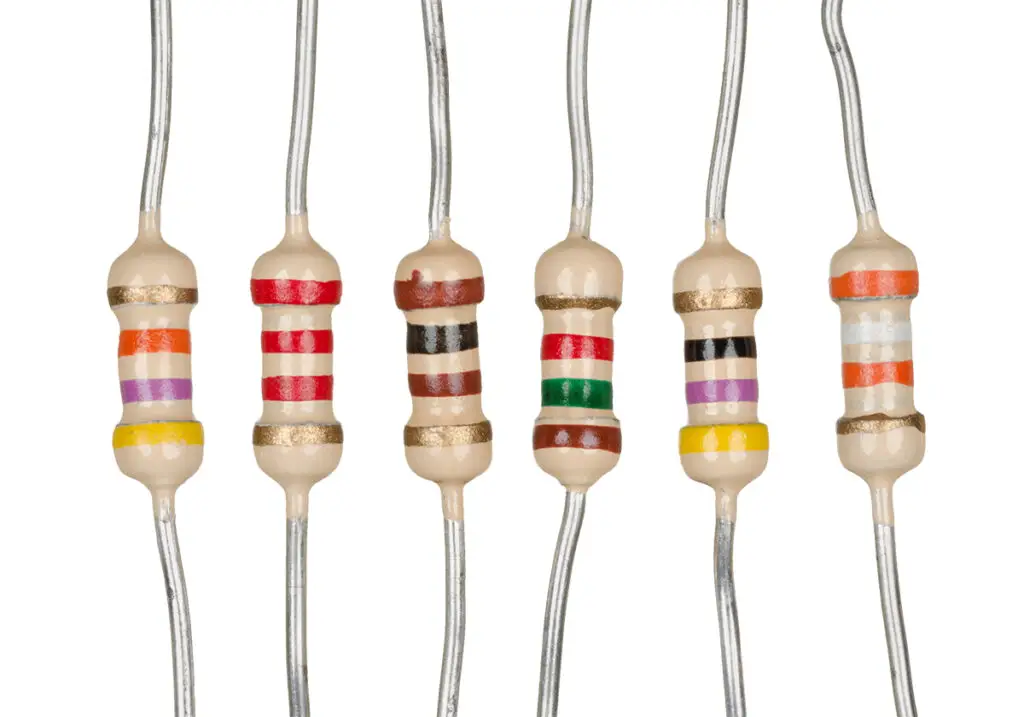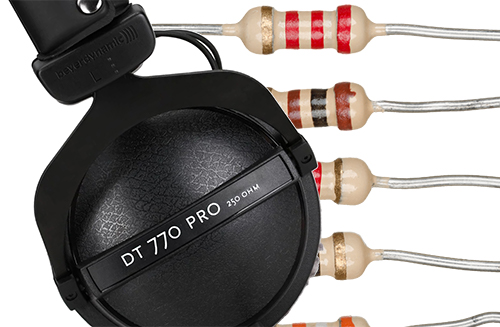Headphones have become an essential accessory in our daily lives, accompanying us through various activities, from commuting to work, exercising, or immersing ourselves in our favorite music or podcasts. With countless models and designs available in the market, understanding the technical aspects of headphones is helpful in making an informed decision.
One key specification that often gets overlooked is impedance.
Impedance plays a significant role in determining compatibility, power requirements, and overall audio performance.
In this article, we will explore the concept of impedance in headphones, its importance, and how it affects your listening experience, enabling you to choose the perfect pair of headphones for your needs and preferences.

What Is Impedance In Headphones?
Impedance in headphones refers to the electrical resistance of the headphones’ internal components, specifically the voice coils in the drivers. It is measured in ohms (Ω) and is an important factor to consider when selecting and pairing headphones with audio sources like smartphones, portable music players, or amplifiers.
Headphones with lower impedance (typically below 32 ohms) require less power to drive them and are generally suitable for use with portable devices like smartphones and MP3 players, as they can produce sufficient volume levels without needing an external amplifier.
On the other hand, headphones with higher impedance (above 32 ohms and up to 600 ohms or more) often require more power to drive them and may need an external amplifier to achieve optimal performance, especially when used with portable devices. Higher impedance headphones can offer some advantages, such as reduced distortion and better sound quality at higher volumes, but they may not be as convenient for use with portable devices.
When selecting headphones, it’s essential to consider their impedance along with the output impedance of the audio source to ensure compatibility and optimal performance. Mismatched impedance may result in reduced volume levels, poor audio quality, or potential damage to the headphones or the audio source.
Do Ohms Matter In Headphones?
ohms do matter in headphones, as they represent the impedance of the headphones. Impedance, measured in ohms (Ω), plays a significant role in the compatibility and performance of headphones when used with various audio sources. Some factors influenced by impedance include:
Power requirements
Headphones with lower impedance (below 32 ohms) require less power to drive them, making them suitable for portable devices like smartphones and MP3 players. Higher impedance headphones (above 32 ohms) require more power and often need an external amplifier for optimal performance, especially with portable devices.
Sound quality
Higher impedance headphones can offer improved sound quality, particularly at higher volumes, as they are less prone to distortion. However, they may not be as convenient for use with portable devices due to their increased power requirements.
Compatibility
It’s essential to consider the impedance of your headphones and the output impedance of your audio source to ensure compatibility. Mismatched impedance may result in reduced volume levels, poor audio quality, or potential damage to the headphones or the audio source.
Amplification
If you have high impedance headphones, you might need an external amplifier to achieve optimal performance. An amplifier can provide the necessary power to drive the headphones properly and deliver the best possible sound quality.
In summary, ohms matter in headphones because they impact power requirements, sound quality, compatibility, and the potential need for amplification. It’s important to choose headphones with an impedance that matches your intended use and audio sources for the best listening experience.

What Is The Benefit Of Higher Impedance Headphones?
Higher impedance headphones offer several benefits compared to their lower impedance counterparts, particularly when paired with suitable audio sources and amplifiers. Some advantages include:
Improved sound quality
Higher impedance headphones generally provide better sound quality, particularly at higher volume levels. They are less prone to distortion and can deliver cleaner and more detailed audio due to their increased resistance, which helps to reduce unwanted electrical noise.
Better handling of amplification
High impedance headphones can handle more power from amplifiers without distortion or overheating. This means that they can be driven harder by powerful amplifiers without risking damage to the headphones or a significant loss in audio quality.
Lower electrical noise
Higher impedance headphones are less sensitive to electrical noise, such as interference from other devices or cables. This can result in a cleaner and more interference-free audio signal.
Electrical noise can come from various sources, such as other electronic devices, power supplies, or cables. It can cause audible distortion or interference in the audio signal, leading to a degraded listening experience. Higher impedance headphones are less prone to pick up this noise, as their increased resistance helps to suppress the effects of interference on the audio signal.
Less demand on the audio source
High impedance headphones draw less current from the audio source, which can help reduce the strain on the source’s power supply and potentially extend the battery life of portable devices. However, this also means that they require more voltage to achieve the same volume levels as lower impedance headphones.
Better suited for studio and professional use
Due to their improved sound quality and ability to handle powerful amplifiers, higher impedance headphones are often preferred in studio and professional settings where accurate sound reproduction is crucial.
However, it’s essential to note that higher impedance headphones usually require more power to drive them effectively and might need an external amplifier for optimal performance, particularly with portable devices. When selecting headphones, it’s crucial to consider their impedance and the output impedance of your audio source to ensure compatibility and the best possible listening experience.
How Many Ohms Should Headphones Have?
The ideal number of ohms (impedance) for headphones depends on your intended use and the devices you plan to use them with. Generally, headphones can be categorized into two groups based on impedance: low impedance and high impedance.
- Low impedance headphones (below 32 ohms): These headphones require less power to drive them and are suitable for use with portable devices like smartphones, tablets, and MP3 players. They can produce sufficient volume levels without needing an external amplifier. If you primarily use portable devices for listening to music, low impedance headphones are a good choice.
- High impedance headphones (above 32 ohms, up to 600 ohms or more): These headphones require more power to drive them effectively and often need an external amplifier for optimal performance, particularly when used with portable devices. High impedance headphones can offer some advantages, such as improved sound quality at higher volumes and reduced distortion. They are often preferred for studio and professional use, as well as by audiophiles who value precise sound reproduction.
When choosing headphones, it’s essential to consider the impedance in relation to the output impedance of your audio sources. Mismatched impedance may result in reduced volume levels, poor audio quality, or potential damage to the headphones or the audio source. It’s important to select headphones with an impedance that matches your intended use and is compatible with your devices for the best listening experience.
How Do I Check The Impedance Of Headphones?
There are several methods to find the impedance of your headphones, and one method I would use to check the impedance.

Use a multimeter
A multimeter is an electronic instrument used to measure various electrical properties, such as voltage, current, and resistance.
I have a DMM lying around that I use fairly often to check batteries and the like.
Here are the steps to use a multimeter to check the impedance of a pair of headphones:
- To measure the impedance of your headphones, you’ll need a multimeter with a resistance (ohms) measuring function.
- Set your multimeter to the resistance (ohms) setting.
- Disconnect your headphones from any audio source.
- Touch one probe to the tip of the headphone connector and the other probe to the sleeve (the base part of the connector).
- Read the resistance value displayed on the multimeter. This value is an approximation of the headphone impedance. Note that this method measures DC resistance, which is not exactly the same as impedance (AC resistance), but it should give you a rough idea.
If you don’t have a multimeter around, here are more ways to find the impedance of your headphones:
Look for specifications on the packaging or manual
The easiest way to find the impedance of your headphones is to check the packaging, user manual, or any accompanying documentation. Manufacturers usually list the headphone’s impedance, typically measured in ohms (Ω), as one of the technical specifications.
Check the headphone or cable
Some manufacturers print or engrave the impedance directly on the headphones, usually on the earcup or the headband. Alternatively, it might be indicated on the cable or the plug, often near the connector.
Search online
If you cannot find the impedance on the packaging or headphones themselves, you can search online for the specific headphone model. Visit the manufacturer’s website or check product listings and reviews to find the impedance information. Tech review sites and headphone forums might also provide this information.
This method isn’t the best because manufacturers will often make the same model with different impedances. That way, you can choose the best version for how you plan to use the headphones.
Contact the manufacturer
If you still cannot find the impedance information for your headphones, try reaching out to the manufacturer’s customer support. They should be able to provide you with the necessary information about your specific headphone model.
Conclusion
Understanding headphone impedance is fundamental for making informed decisions when selecting the perfect pair of headphones. Impedance, measured in ohms, influences power requirements, compatibility with audio sources, and overall sound quality.
Lower impedance headphones are suitable for portable devices, while higher impedance models often require external amplification and provide better audio quality, particularly at higher volumes.
By considering the impedance of headphones and ensuring compatibility with your audio sources, you can optimize your listening experience and enjoy a more immersive and satisfying audio performance.
The perfect headphones are not just about design and aesthetics but also about matching the technical specifications to your unique requirements and preferences.


